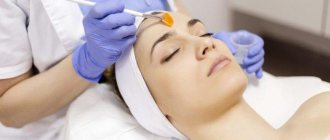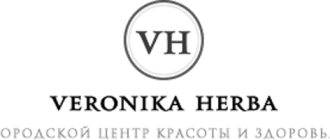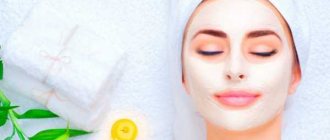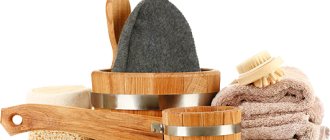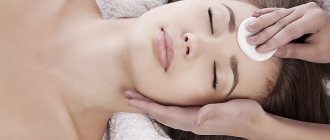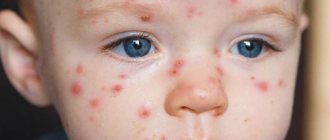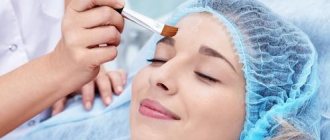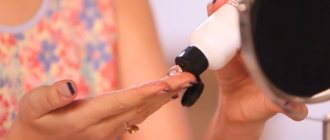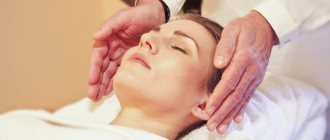What it is?
Coral peeling appeared on the cosmetic services market several years ago, but has already established itself as an extremely effective facial cleanser.
This method of skin cleansing refers to abrasive or mechanical methods. However, experts clarify that thanks to the main and additional components, the cleansing procedure using coral peeling is a combination of mechanical and light chemical effects on the skin. The product has a complex composition, including only natural ingredients:
- minerals, proteins, plant acids, vitamins C and E contained in grains of coral;
- Brazilian herbs;
- essential oils;
- Dead Sea salt.
The exfoliating effect is exerted by small particles of corals growing in the Red Sea.
A rich complex of additional substances enhances the effect of the procedure and ensures high-quality results:
- plant acids accelerate the process of skin regeneration;
- minerals and salt saturate the skin with essential microelements at the cellular level;
- herbs have an anti-allergenic and antiseptic effect, eliminating the risk of inflammation;
- oils nourish tissues and give them elasticity.
A product based on coral cleanses the skin at the surface and middle levels. The depth of cleaning depends on the amount of composition and the time of rubbing it into the skin.
Professional cosmetology clinics and salons position it as a gentle alternative to similar chemical procedures, the harshness of which is not suitable for everyone. The end result is comparable to methods such as microdermabrasion and glycolic peeling. At the same time, the use of a coral preparation is recognized by experts as one of the most gentle ways to deep cleanse the skin.
In practice, the professional line Rose de Mer, produced by the Israeli company Christina, is most often used.
What kind of peeling is prohibited for rosacea?
It is strictly forbidden to do salicylic peeling if you have rosacea. This procedure is considered the most effective, but salicylic acid is an “aggressive” substance and can cause severe irritation.
Glycolic peeling is a conditional contraindication. The substance should contain green tea or chitosan, but even in this case, the procedure is permitted only if there is no exacerbation of the disease in question.
We recommend watching a video on how to daily care for skin with rosacea:
COMPOSITION AND BENEFITS OF COMPONENTS
Marine exfoliants combine mechanical and chemical effects due to their complex composition:
- Coral particles;
- Amazon seaweed extracts;
- Chlorophyll;
- Healing herbs;
- Dead Sea salts;
- Proteins of plant origin;
- Vitamins and minerals;
- Organic acids;
- Essential oils.
Pros : this composition simultaneously normalizes the level of sebum, improves blood circulation, exfoliates the stratum corneum, disinfects, rejuvenates and moisturizes.
Cons: during the session you will have to put up with the unpleasant “fishy” smell of the drug.
What skin problems does it solve?
A healthy epidermis is renewed monthly. However, a polluted atmosphere, poor quality nutrition, natural aging and other factors slow down the replacement of old cells with new ones.
This is relevant not only for the face, but also for the décolleté, neck and back of the hands, where this type of peeling can be used.
Exfoliation with abrasive particles helps clean pores and normalize oxygen supply to the skin, which provides a slight lifting effect. Microtrauma additionally activates the production of collagen protein.
Unlike peelings with a predominance of acids, coral cleansing is suitable for patients of any age, gender and skin type (even dark-skinned people, who usually run the risk of “staining” after “chemistry”).
For those with sensitive skin, the procedure helps to cope with the problem of constant allergic reactions : crushed coral crumbs provoke allergic rashes much less frequently than most other ingredients in cosmetology.
Where it will be useless and harmful
Despite the versatility of coral peeling, it is worth abandoning this method of exfoliation if at least one of the contraindications is detected:
- Hypersensitivity;
- Individual intolerance (you should first undergo allergy tests);
- Herpes in the last 6 months before the session (as a last resort, you can take a course of antiviral drugs 3-4 days before);
- Open wounds in the intended area of influence;
- Demodicosis (it is necessary to ensure in advance that there are no subcutaneous parasites through a 5-minute laboratory scraping with an instant result);
- Skin infections;
- Taking retinoids (vitamin A derivatives);
- Acne in the active stage (otherwise the infection may spread throughout the entire treatment area);
- Cuperosis (spider veins can be dealt with in this way only under the guidance of an experienced cosmetologist and during their remission, otherwise the network of capillaries only expands after exposing the deeper layers of the skin);
- Pregnancy (difficult to predict the result);
- Fresh tan (up to 2 weeks);
- Nervous disorders , increased fatigue, poor pain tolerance, emotionality, PMS period.
It is also undesirable to resort to coral cleansing during periods of active sun.
We recommend: PEELING AND DEMODECOSIS: getting rid of unnecessary roommates
Advantages and disadvantages
Facial cleansing products made on the basis of coral raw materials have proven themselves well in the professional community of cosmetologists. Experts and patients note the numerous advantages of peeling, which include:
- noticeable improvement in skin condition after the procedure;
- more gentle effect on tissue compared to chemical peels;
- anti-allergenic components included in the composition;
- gentle mechanical cleaning is combined with antibacterial, softening and stimulating effects;
- Can be used for any skin type, including sensitive;
- it is possible to control the depth of treatment (in a salon environment);
- It is permissible to peel at any time of the year;
- the product is characterized by age and gender versatility;
- long-lasting results are guaranteed;
- the funds last a long time;
- acceptable cost.
We recommend: List of contraindications for facial peeling. Who should not undergo the procedure and what complications may occur?
However, coral peeling has some disadvantages. Most often they are disappointed due to:
- severe pain during the procedure and some time after;
- long period of rehabilitation;
- For a noticeable result, a course consisting of several sessions is required.
Coral peeling technique
Chemical peels have a high content of acidic components, which have a stronger effect on the skin. Coral peeling due to abrasive involves a similar effect, but much softer.
Modern scientific technologies in cosmetology make it possible to find any product with an exfoliating effect for home use in the form of scrubs. What are the differences between scrubbing and coral peeling? A significant difference between the peelings presented above is the gentleness of the coral cleansing process, which eliminates damage and drying of the skin.
You need to understand the difference between scrubbing and peeling
What is the principle of the procedure? A special feature of coral skin cleansing is the virtual absence of pain. This procedure is often resorted to not only by women, but also by men who are more sensitive to such types of procedures.
The product is evenly distributed onto the top layer of skin, and each area is treated with massage actions.
Important ! Of all the benefits of the procedure, there is one most worthy one, which distinguishes it from other cosmetic procedures - the use is suitable for sensitive and thin skin.
This procedure can be performed for any skin type.
Before starting treatment, you need a mandatory consultation with a specialist who will establish the exact time frame, number and frequency of procedures. According to statistics, this is 1-2 times within 7 days.
In addition to using “classic” products (for example, “Rose de Mer”), which have more “powerful” components, at the same time they carry out deep cleansing of the skin. After the procedure, the patient may experience some discomfort, which is considered normal for this type of peeling. These are painful sensations in the form of tingling, dryness and tension of the skin with possible damage to the top layer.
Important ! As with any procedure, a prerequisite for starting the process is a consultation with a doctor, who will individually prescribe an effective and less aggressive composition of the product, specifying the application method for a specific skin type.
You must get a doctor's approval
Directions for using coral formulations
Peeling with corals is used not only for medicinal purposes, but also for prevention.
The procedure is designed to solve the following problems:
- Acne marks. You can fight scars and cicatrices during the period of remission of the disease. As a result, small flaws are completely removed, and pronounced ones become less noticeable.
- Increased pigmentation. Skin spots appear for various reasons. Deep impact helps to make them less noticeable or get rid of them completely. One course of peeling is enough to achieve noticeable results.
- Decreased or loss of tone. The impact on the deep layers of the skin triggers restoration processes in the cells. Injury to the surface tones the facial muscles. Thanks to this, a lifting effect is achieved.
- Stretch marks and enlarged pores. Defects are removed if the coral scrub contains hyaluronic acid and vitamin supplements. In advanced cases, additional procedures may be required.
- Acne. Improvement of the skin occurs due to the antiseptic effect that the composition has.
- Age-related changes. At the first signs of aging, it can completely polish the skin. In advanced cases, it is only possible to make folds and wrinkles less pronounced.
- Vascular damage. The unique composition of coral powder strengthens the walls of blood vessels. Thanks to the procedure, there is an improvement in blood circulation.
Peeling, like any other procedure, may not bring the expected effect. In addition, in some cases, cleaning can be harmful.
Situations when cleaning should be avoided:
- Active form of acne. In cases of latent inflammation with suppuration, the procedure cannot be performed. During cleaning, a rash localized in one place will spread over the entire surface. Sensitive skin after scrubbing is vulnerable to infections. Severe irritation can occur, which can lead to the formation of scars.
- Demodecosis. As with the rash, peeling will distribute the mite throughout the skin. Even in an inactive form of the disease, the procedure is not recommended.
- Acute form of herpes. The integrity of the formation must not be violated, otherwise the pus contained inside will be distributed over the skin. This will lead to a worsening of the disease.
- Summer time. High solar activity leads to the formation of age spots. Therefore, even in the cold season, after the procedure, it is necessary to apply a sunscreen with an SPF filter value greater than 50.
It is recommended to avoid peeling during pregnancy and breastfeeding. Infectious and colds are also contraindications.
Don’t miss the most popular article in the section: Plasmolifting of the face - what it is, how it is carried out, results, photos before and after the procedure.
Coral peeling Christina (Christina)
Coral peeling “Rose de Mer” from the Israeli company Christina is an excellent alternative to superficial - medium chemical peeling or even medium microdermabrasion. This is a professional, certified peeling, which contains only natural ingredients, each of which has a specific function:
- To cleanse the skin, stimulate the cells of the surface layer and activate blood circulation - young and old Red Sea corals crushed to the state of microneedles;
- To soften dead horny scales and improve their exfoliation - Dead Sea salts;
- To reduce the production of sebum - sebum and antibacterial effect - algae extracts;
- To accelerate the processes of regeneration and smooth out wrinkles - medicinal herbs from Brazil and the Amazonian lowland;
- To tone and nourish the skin - vitamins A, C, E.
Coral peeling Ros de Mer can be performed using two protocols:
- For the purpose of light exfoliation - in the Light- peel (shallow peeling). In this case, plant components will prevail in the peeling composition.
- For deep penetration and exfoliation – in the Deep- peel . This type of peeling contains a much higher proportion of crushed coral powder. Carrying out the procedure according to this protocol is considered a classic coral peeling with the effect of chemical exfoliation and quick results.
Indications for Rose de Mer peeling
Carrying out coral peeling procedures
- one of the effective methods for correcting and treating various aesthetic problems of the skin of the face and body. Suitable for people even with sensitive skin.
Within the walls of our clinic, Rose de Mer peeling procedures are part of a comprehensive acne treatment program and are especially effective when localizing rashes in the back and chest area!
Main indications for coral peeling:
- Treatment of acne of any severity.
- Prevention and treatment of post-acne: enlarged pores, pigmentation, scars, infiltrates, stagnant spots.
- Hyperpigmentation of any etiology.
- Premature skin aging, loss of tone.
- Striae and scars.
- Rejuvenation of the skin of the neck, décolleté, hands.
Coral peeling is not performed if:
- Pregnancy and lactation.
- Active form of herpes.
- Open wounds and skin diseases.
Stages of the procedure
Coral peeling Rose de Mer
is simple to perform, safe, does not require pre-peeling preparation and consists of the following steps:
- The skin is cleansed of makeup and impurities with a special softening soap;
- A peeling agent is applied to problem areas of the skin using a brush. The peeling composition is rubbed into the skin with massaging movements for 2-10 minutes. The concentration of coral powder in the mixture and the massage time depend on the protocol used for peeling. This stage of the procedure usually causes discomfort and a feeling of “rubbing broken glass” - but these are only subjective sensations;
- Then apply a wet compress - a damp, cool towel - to the skin for 10–15 minutes;
- The peeling agent is carefully washed off with cold water;
- At the end of the peeling, a soothing mask and then a protective gel are applied to the skin;
- The procedure is completed by applying sunscreen.
Post-peeling care
The duration of the rehabilitation period after coral peeling is 5 days, during which it is recommended to avoid walking in the bright sun, going to the pool, sauna and solarium. To achieve maximum effect, you must use only certain cosmetics that do not contain alcohol.
You can enhance the effect of peeling with proper home care:
- In the first two days after the session, wash the skin only with warm water.
- On the third day, the skin begins to peel, so it is necessary to use a moisturizing and non-greasy nourishing cream.
- On the fourth to sixth day, at the peak of active peeling, we recommend that our patients make a compress of softened Rose de Mer soap, and then massage the skin with a previously applied moisturizer.
- For two weeks before going outside, we recommend that you apply sunscreen to your skin.
Expected reactions
Redness of the skin without peeling at the site of peeling during the first 2 days, then on days 3-5 - large- and fine-plate peeling, which can last for 4-6 days.
Depending on the problems being solved, coral peeling is carried out in a course of 3 to 5 procedures with an interval of 2-3 weeks. If necessary, according to indications, coral peeling can be combined with other cosmetic procedures.
Benefits of coral peeling
- Quick effect;
- Controlled and long-term results;
- Minimum allergic reactions;
- Suitable for all skin phototypes;
- Does not injure the surface of the skin.
After peeling, the skin becomes soft and elastic, acquires a healthy color, pores narrow, congestive spots and hyperpigmentation are eliminated. The composition of the product normalizes the functioning of the sebaceous glands and has an antibacterial effect, so after a course of peelings, acne rashes are significantly reduced or completely disappear.
The result after a cosmetic peeling procedure lasts for a long time.
Before and after results
- Peelings
- Almond peeling “Mediderma”
3200 rub.
- Salicylic peeling "Mediderma"
3900 rub.
- Azelaine peeling "Mediderma"
3100 rub.
- Hycolic + salicylic combined peeling “Mediderma”
4300 RUR
- Glycolic peeling 50-70% “Medexfol”
3100 rub.
- AHA peeling “Holy Land” + care
3800 rub.
- ABR- peeling, “Holy Land” face + care
3900 rub.
- ABR- peeling, back “Holy Land” + care
5800 rub.
- AHA + ABR combined peeling, face “Holy Land”
4500 rub.
- AHA + ABR combined peeling, back “Holy Land”
6800 rub.
- Trichloroacetic peeling "Medexfol"
6300 rub.
- Coral peeling, face “Christina”
5200 rub.
- Coral back peeling “Christina”
7200 rub.
- Retinol peeling ICP “Martinex”
8700 rub.
- PRX-T33 peeling
4200 rub.
- PRX-T33 (face + neck + décolleté)
7500 rub.
- Enzyme peeling Lactolan “Holy Land” + care
3600 rub.
- Enzyme peeling “Danne” + care
4700 rub.
- Depigmenting peeling M.E.Line for intimate areas + home care, brightening.
14200 rub.
- Depigmenting peeling Enerpeel NECK
3100 rub.
- Jessner Peel
3800 rub.
- Purges
- Manual cleaning “Holy Land”
4200 rub.
- Manual cleaning "Danne"
5300 rub.
- Manual cleaning “Christina”
5200 rub.
- Combined manual cleaning “Enerpeel SA”
3200 rub.
- Combined cleaning “Holy Land”
4500 rub.
- Combined cleaning “Danne”
5700 rub.
- Millium removal
350 rub.
- Cares
- Care for oily and combination skin using Danne products
4700 rub.
- Lifting care using “Danne” preparations
6150 rub.
- Correction of facial contours using Danne preparations
5800 rub.
- Correction of rosacea using Danne preparations
5500 rub.
- Pigmentation correction using Danne products
5400 rub.
Main varieties
A coral-based product is used to eliminate various skin imperfections. Indications and methods of use depend on the specific skin type, existing problems and sensitivity to such procedures. The most popular types of coral peeling are soft (light) and classic options.
Soft
Light peeling is rich in plant extracts and extracts that form its basis. The drug is used to penetrate to a shallow depth of the skin. The main purposes of its use:
- superficial exfoliation of keratinized skin particles;
- stimulation of healing of damaged areas;
- neutralization of inflammatory processes;
- increasing skin immunity to various adverse factors;
- improvement of skin color.
The mild version is recommended as a “weekend treatment”.
Classical
The procedure, carried out using the classic variety, involves deep penetration of the composition into the tissue and active peeling of keratinized particles. A feature of the classic version of coral peeling is a flexible approach to eliminating cosmetic flaws. This opportunity is provided by the variability in the use of the same product due to the time spent on the procedure.
It is the classic type of coral peeling that is recommended as an alternative to more aggressive chemical cleaning methods.
Classification
Rose de Mer peelings are classified according to their conditions of use. Manufacturers offer lines of drugs for carrying out procedures in professional and home conditions.
Both the professional and home line of products are supplemented with products for post-peeling skin care.
- Products for professional use:
- soap with a disinfecting and light exfoliating effect; used at the stage of preparation for the procedure;
- rich peeling based on marine vegetation (in powder form); characterized by a high exfoliating effect;
- light peeling (in powder form); recommended for eliminating pigmentation and acne on the face, goose bumps, peeling and roughness of body skin;
- activator for diluting the composition.
- Products for home use:
- soap with natural exfoliating ingredients, which has a comprehensive effect on the condition of the skin;
- soap with disinfectant and mild exfoliating effect; used at the stage of preparation for the procedure.
Basic peeling products are not included in the home series.
What is coral peeling?
Coral peeling is a type of mechanical peeling. The product contains natural coral particles and a chemical agent. Quite often, glycolic acid is used as a chemical component, but in a very low concentration (only 1%). Before the procedure, check the composition of the drug, especially if you have a tendency to allergic reactions.
Standard composition of the peeling product:
- Shea Butter. Thanks to it, the main texture of the product is formed. The oil moisturizes and tones the skin well.
- Abrasive particles from coral.
- May additionally contain sea salts.
- Peeling acids.
In salons and clinics, the Israeli coral peeling product Rose de Mer is most often used.
PROCEDURE PROTOCOL (STEP-BY-STEP INSTRUCTIONS)
No special preparation for the face is required before coral peeling.
If there are fresh pustules, you need to do mechanical cleaning 2-3 weeks
Sometimes a cosmetologist prescribes a preparatory soap peeling 1 month before the session
- gets rid of blackheads,
- smoothes the surface of the skin,
- ensures blood flow to tissues,
- reduces the likelihood of unforeseen complications.
Peeling ROSE DE MER from the brand KRISTINA
The step-by-step protocol of the procedure from the company CHRISTINA (Israel) is as follows:
- Cleansing stage. This includes: makeup removal, degreasing with tonic, steaming with a damp compress for 10-15 minutes. At the same time, coral dust is filled with a swelling solution.
- Massage with ROSE DE MER . The exfoliant is applied in a thin layer with soft circular movements for 2-10 minutes, depending on the desired result.
- Remove the product with damp gauze or sponge.
- Pain relief with a compress of cold wet wipes (at the same time reduces redness).
- “Sealing” the face with a special composition to protect injured tissues from bacteria.
- Calming stage. To soften the epidermis, use a cream, hyaluronic serum or mask: apply by patting for 5-10 minutes without the need to rinse.
- Barrier tinting stage. Finally, ROSE DE MER clay-based foundation cream-powder is applied with a damp sponge, which evens out the complexion without the help of artificial dyes and creates a barrier against pathogenic microorganisms.
Cream powder does not need to be washed off.
Photos BEFORE and AFTER
How coral peeling works
The main difference between coral and other types of peelings is that it has an abrasive substance and in some cases acts more gently than acid-containing preparations.
On the other hand, why go to a salon for this procedure if you can use regular scrubs, which also have various particles that help exfoliate? But home scrubbing is different.
The mild type of coral peeling differs from a regular scrub as it does not damage or dry out the skin. This is precisely the main advantage when compared with self-scrubbing.
How is this peeling carried out? The procedure, with a certain application technique, is almost painless and for this reason it is often performed on men who tolerate pain during sessions worse than the fair sex.
The mass is evenly applied to the surface of the skin, after which the cosmetologist treats each area of the face with soft massage movements.
Another advantage of this product is that it can be used even on the thinnest and most sensitive skin.
On average, the procedure should be performed 1-2 times a week, but the exact number of sessions should be determined by the attending physician.
On the other hand, there are a number of peelings that have a more aggressive composition and affect the skin more actively.
These drugs include Rose de Mer Christina, which is able to affect the deeper layers of the dermis (depending on the method of facial treatment and the intensity of the massage).
After a session using such peeling, the patient experiences all the “delights” of peeling treatment: tingling, pain throughout the day, dryness and tightness of the skin, cracks in the upper layers of the epidermis.
The application method and type of drug are determined by the attending physician on an individual basis.
Technique
To obtain a high-quality result and neutralize possible problems, it is recommended to carefully follow the manufacturer’s instructions and follow all stages of the procedure.
Preparatory stage
It is necessary to cleanse the skin with peeling soap. Its application:
- will provide primary exfoliation of “old” particles of the epidermis;
- will open comedones;
- balances the secretion of the sebaceous glands;
- will have an anti-inflammatory effect;
- prepares the tissue for further manipulation.
Main stage
Depends on the chosen method and means, it is important to listen to the advice of a professional cosmetologist.
For soft peeling (impact on the surface layer of the skin):
- dilute the powder with the activator in a ratio of 1:1;
- apply the resulting mass to the entire surface to be treated;
- hold for 5 minutes.
Light peeling does not involve rubbing the product into the skin.
For classic peeling:
- dilute the powder with the activator in a ratio of 1:1;
- apply the resulting mixture to the face, avoiding areas around the eyes and lips;
- rub in with gentle movements for about 2 minutes (to affect only the stratum corneum of the skin) or for 5-10 minutes (to penetrate to the granular layer of the skin).
We recommend: How to get rid of age spots using peeling in the salon and at home? Precautions and expert advice
Final
Consists of post-peeling procedures, including application of a mask, gel and cream. At this stage it is recommended:
- apply a soothing mask from the same series as the main products; it will absorb excess fat, relieve irritation, tighten pores and have an absorbent effect;
- apply a post-peeling gel that protects the skin from pollution and unwanted environmental influences; the product retains the active components of the peeling inside the pores;
- Apply a post-peeling protective cream that has antibacterial and antifungal properties and masks skin defects.
Post-peel protection may include additional medications and be used after any active procedures.
Types of coral cleaning
Modern cosmetological developments suggest the use of coral abrasives in two types of peeling, depending on the proportions and area of their application.
Classic peeling. Sometimes it is also called medium peeling. It is distinguished by the duration of exposure, and all nutrients penetrate into the middle part of the skin. Coral in the form of small particles, the main component of the peeling, is applied to the skin with gentle, light movements so that not a single particle disappears from the affected area. With such careful technique, the cosmetologist achieves deep penetration of the substance under the skin, high-quality exfoliation in order to effectively cleanse the skin and provide it with useful substances.
Classic peeling stimulates the upper and middle layers of the skin, starting the process of exfoliation, regeneration and further renewal of the skin.
Soft peeling. This peeling, due to the herbal extracts in its composition, provides a softening effect for the skin. Basically, the scope of his activity is superficial, he eliminates minor facial skin problems.
Soft peeling is a short procedure during which the product is simply applied to the face, without rubbing, and ten minutes later it is removed from its surface. Thus, the stratum corneum is eliminated, and the skin itself is saturated with nutrients and vitamins, becoming elastic, smooth and velvety.
Coral peeling concept
To understand the coral peeling procedure, you first need to understand the process of action of other chemical peels. The chemical basis of most peelings on the market purposefully destroys the surface layer of the skin, thereby triggering the mechanism of regeneration and renewal of the facial skin. After the effective effect of peeling, the surface layer dies and exfoliates, and the patient receives healthy, soft and renewed skin.
Important ! The requirement after using the procedure is to completely exclude self-removal of naturally occurring crusts, that is, it is impossible to slow down or speed up the process of healing and restoration of the skin.
Most chemical treatments remove the surface layer of skin
Coral peeling is a more gentle way to eliminate the problem, since mechanical action on the skin of the face does not make it thinner, which allows you to use the service for a long time. This procedure differs from other peelings in that the composition is completely natural, thanks to which you can achieve effective results after just 6 procedures, once a week. During the period between treatments, the skin continues the process of exfoliation and restoration. Coral peeling is in demand among people with problem skin such as acne. After several procedures, the skin will again become clean, healthy, without a hint of rash.
Important ! Korean dermatologists are very popularizing this type of cosmetic services.
Coral peeling is considered more gentle
The result of using various products depends on the mechanism of use and application of peeling.
The use of abrasive particles in the form of coral is a distinctive feature of this procedure from chemical peels, which use products that mainly contain acids and other effective, but not always useful components. Coral peeling practically eliminates the content of acids and is based on natural ingredients. The procedure focuses on the mechanical effect on the surface of the skin, as a result of which the healing and restoration process occurs somewhat differently compared to the regeneration process of chemical removal of the stratum corneum.
Coral serves as an excellent abrasive
The processes vary, but the final result remains similar, so you should avoid disrupting the recovery process, including avoiding cosmetic services that promise to speed up the skin's natural healing mechanism.
Important ! Before any procedure or service that involves a cosmetic effect on the skin, check with specialists about the components included in the composition in order to know exactly the degree of effect on the skin.
It is worth finding out everything you need from your doctor
Efficiency
The use of coral peeling has a wide range of effects and promotes:
- narrowing of enlarged pores;
- treatment of active acne, occurring in any form and having any degree of severity, prevention of post-acne, elimination of its complications (scars, infiltrates, stagnant spots);
- getting rid of post-peeling, hormonal, age-related and other types of hyperpigmentation, as well as spider veins;
- elimination of stretch marks and scars, including after pregnancy;
- general skin rejuvenation;
- eliminating excessive dryness and loss of elasticity of the skin due to exposure to ultraviolet radiation;
- solving the problem of premature aging (loss of tone, wrinkles and sagging);
- improving the color and structure of fabrics.
To obtain a noticeable result, several cosmetic sessions should be performed at intervals of 3-4 weeks. A typical course includes 4 procedures.
Peeling result, reviews
The result of the procedure becomes noticeable after inflammation and peeling of the skin goes away.
Depending on the depth of the peeling, clients report that the skin
- cleared,
- perks up,
- smoothes out (since coral chips polish off the edges of scars, post-acne and even wrinkles and creases),
- pigmentation decreases.
The skin acquires tone, due to which the pores narrow and small wrinkles smooth out.
There are usually no wonderful, radical changes, but the face looks refreshed.
A pronounced lasting effect in terms of cleansing, smoothing the skin and getting rid of pigmentation is usually achieved after a course of 3-4 procedures with an interval of 2-3 weeks and lasts from one to several months.
Peeling does not produce serious anti-aging changes.
Rules of application
There is no significant preparation for coral peeling. It is advisable to visit a cosmetologist in advance for a consultation. The doctor will examine the skin and conduct a conversation. This will help confirm the possibility of performing the procedure and prescribe a course.
If any problem is mild, 1-2 sessions are usually performed. In complex cases - at least 3-4 procedures. It is recommended to plan interventions for the autumn-winter period.
In the case of treating rashes, manual mechanical cleaning can be performed before coral peeling. The procedure is carried out 2-3 weeks before the start of the course using Rose de Mer.
2 weeks before coral peeling, avoid any interventions with increased trauma (hardware, mesotherapy), and avoid tanning.
A session of using Rose de Mer takes 30–50 minutes. The cosmetologist performs the following actions:
- The doctor prepares the composition (combines the dry and wet parts of the product, leaves it to swell).
- Cleansing the skin of cosmetics and impurities. Use a mild detergent. In rare cases, the integument requires preparation using light gommage.
- The finished mixture is applied to the skin in an even layer. The composition is rubbed in with soft circular movements. Hard grains scratch the surface. The process causes unpleasant sensations (burning, pain). The duration of the main stage depends on the required depth of exposure and is determined individually. Usually 3–5 minutes is enough.
- The treated skin is cooled using a compress. This helps relieve feelings of discomfort and reduce external negative manifestations.
- The doctor applies a special “sealing” serum to the skin. The substance prevents possible infection of tissues and helps preserve coral particles for continued beneficial effects. Hard grains of peeling, being in the tissues, cause brighter peeling and subsequent renewal.
- The final stage of the procedure is the application of Christina cover cream for subsequent care when performing coral peeling. The action is painful, but necessary. The substance is based on medicinal clay, protects tissue, masks typical side effects (redness, swelling). The product is an excellent replacement for foundation, which is prohibited from being used during the recovery period.
After the procedure, the cosmetologist explains the nuances of care during rehabilitation. Immediately after peeling, you can return to work and do most of your usual activities.
Can it be done at home?
To use peeling at home, it is better to use a specialized “light” line of products. It includes:
- cleansing and peeling soap that gently exfoliates dead cells, renews the skin and eliminates the causes of hyperkeratosis;
- cream to increase skin elasticity, penetrating deeply into tissues, smoothing and tightening them;
- post-peeling protective cream that promotes cell regeneration and neutralizes inflammation;
- additional post-peeling care products (gels, masks, etc.).
Manufacturers warn that the use of basic products requires additional training. You can use professional coral-based preparations at home only in extreme cases and only after similar procedures have been carried out under the supervision of specialists.
Is it possible to do coral peeling at home?
Many peeling connoisseurs are interested in the question of whether it is possible to carry out the procedure at home. Undoubtedly, many beauty products on the market are best used in specialized clinics or salons with an experienced and certified cosmetologist. Coral peeling is available not only for such conditions, but also for independent use. The complex includes all the necessary products that are applied before, during and after peeling. To carry out the process of exfoliation, cleansing and healing the skin, soap peeling, foundation with clay for use after the procedure, as well as various masks, creams and serums are used.
Such peeling should be done only in specialized clinics and salons.
Important ! Coral peeling, like other similar procedures, has contraindications and possible complications. In general, this method is ideal for most people with different skin types, effectively covering most skin problems.
How to care for your skin after the procedure?
Before the procedure, it is important to understand that coral peeling actively affects the skin and in the first time after the procedure, in most cases unpleasant symptoms occur:
- the skin will take on a reddish-brown tint;
- there will be a feeling of tightness;
- possible slight burning sensation;
- after 2–3 days a protective film forms on the skin;
- fabrics may peel and crack.
Normally, with proper care at home after the procedure, all unpleasant symptoms should disappear on the 5th day, when the resulting scales fall off.
After the peeling procedure, it is necessary to carry out complete skin care in order to achieve its speedy healing and renewal:
- on the first day you should avoid any touching;
- During the entire healing period, a drying serum or acetic acid solution should be used (dilute 1 tablespoon of vinegar in 200 ml of water);
- 2-3 days after peeling, you should start treating the skin with a moisturizer (cream or gel);
- It is necessary to change pillowcases every 3-4 days, use only ironed ones;
- The skin should be protected from sunlight;
- You should not visit baths, saunas, solariums and beaches in the first days after cleaning.
Under no circumstances should you peel off the crust that forms 3–5 days after cleaning.
Skin care after coral peeling
The length of the rehabilitation period depends on how aggressively the peeling was applied and on the choice of product.
If the procedure was carried out for a long time with a high concentration of active substances, then the rehabilitation period is 7-14 days. If a soft and gentle manipulation was carried out, then it may not exist at all.
Even if you do not notice any changes on your face, your skin still needs careful care. The effectiveness of the procedure directly depends on it.
So, what not to do after coral peeling:
- For the first day, you should not touch the skin, as you can mechanically injure it and cause an infection.
- It is prohibited to carry out other cosmetic manipulations during the peeling course and the entire rehabilitation period.
- During the week you cannot visit saunas, swimming pools and baths.
- You should not appear in direct sunlight or visit solariums. If you urgently need to go outside in sunny weather, then use a cream or spray with a sunscreen effect (SPF should be above 50).
- Under no circumstances should you remove peeling crusts and scales. This leads to skin injury and the formation of scars, which will be much more difficult to deal with than acne.
- You cannot use decorative cosmetics throughout the healing period.
Care instructions:
- For the first 3 days you need to wash your face only with water.
- On the 4th day, you can start using foams and gels that do not contain alcohols or acids. The pH should be close to neutral.
- If severe inflammation of the skin is observed, then you can use creams with a regenerative and soothing effect (bepanten).
- Immediately after the skin peels off, you need to start using moisturizers.
Coral peeling procedure
Pre-peeling preparation is not required; sometimes pre-cleaning is carried out.
After cleansing, a paste of coral dust with a special solution is applied to the face. The composition smells very unpleasant, like algae and fish.
This paste is rubbed into the skin with light massage movements.
The procedure is very painful!
It seems as if the skin is being scraped with sandpaper or crushed glass, and millions of microscopic needles are being driven under it.
Fortunately, this does not last long, usually no more than 2-3 minutes for the first time, unfortunately, after finishing the massage and washing off the mixture, the pain does not stop, since some of the coral dust remains on the skin, where it should continue to work.
After peeling, cold wet wipes are placed on the face - the cold muffles pain and reduces future redness of the skin.
Then the face is treated with a special adhesive composition that prevents microbes from entering the injured skin and at the same time retains coral particles in it.
After this, a foundation based on healing clay is usually applied, which does not need to be washed off until the next day.
Back to the beginning of the article
How does the procedure work?
Typically, no special preparation is required, unlike acidic ones. Before peeling, you can perform mechanical cleansing if you have acne, and allow the skin to recover.
The procedure itself does not take much time.
- At the first stage, the face is cleansed of cosmetics and impurities. For deeper cleansing of the skin, gommage can be used. But this is at the discretion of the cosmetologist. When washing, dry coral dust powder is filled with a special solution for swelling.
- At the second stage, the prepared corals are applied evenly to the face and with soft, very light movements they begin to rub or roll into the skin.
This is the most unpleasant stage, since the massage does not seem soft to the patient at all. Sharp grains of coral scratch the skin with every movement and cause burning sensations and acute pain.
The massage is carried out for 3-5 minutes, depending on how deeply the cosmetologist wants to work the skin. To reduce pain, wipes soaked in ice water are applied to the face after finishing the massage. Cold also causes less redness of the skin after the procedure. The cosmetologist can change the napkins several times, re-wetting them in cold water.
After cooling the skin, a special “sealing” composition is applied to the face, a serum with a specific chemical odor, which, on the one hand, prevents microorganisms that can cause a rash from entering the injured skin, and on the other hand, promotes longer preservation of coral fragments in the skin. The longer the corals remain in the skin, the more pronounced the peeling occurs, and the better the skin is renewed.
- At the third stage, Rose de Mer cover cream is applied, which perfectly replaces foundation and powder, but does not contain artificial pigments. It is based on healing clay, which gives the cream a pleasant beige tint and protects the skin from the possible development of a pustular rash.
Video: Natural peeling
Immediately after the procedure, especially if a cover cream was applied, the skin appears slightly red and tight. But this does not prevent the patient from working or meeting people on the day of peeling. You can’t wash your face on the first evening. Cover cream can be left overnight without harming the skin.
Applying cover cream after the procedure is painful. Touching your face with your collar, hands, or hair is also painful. It is unlikely that you will be able to lie on the pillows with your cheek on the first night without pain. It feels as if you fell face first into glass wool and there are still thousands and thousands of small sharp needles in your skin. They really are there, only they are sharp corals that continue to exfoliate the skin.
Contraindications
Despite the natural composition of the drugs, there are a number of contraindications for their use. If there is at least one of the indicators listed below, the indications for the procedure are canceled. Even mild coral-based peeling is not recommended in the following cases:
- any damage or inflammation of the skin and mucous tissues, including exacerbation of herpes;
- acute stage of viral and infectious diseases;
- increased body temperature;
- manifestations of rosacea (with the exception of persistent remission);
- pregnancy at any stage, as well as during breastfeeding;
- reduced pain threshold (the procedure is quite traumatic and painful);
- taking vitamin A and its derivatives;
- individual intolerance to the components included in the drugs.
We recommend: Beauty at the tip of a needle: differences between mesotherapy and peeling. What's better?
Despite the high effectiveness of coral peeling, in case of contraindications, it is better to use gentler methods of cleansing the skin.
The principle of action of the drug
Rose de Mer is a bright representative of coral peeling; it has a coordinated composition that provides a comprehensive effect. The substance has an effective exfoliating effect. The components included in the composition help soften the surface layer, which facilitates the process of cleaning the surface.
Treated leather, which has experienced the mechanical work of solid particles, is exposed to components useful for restoration. Tissues receive nutrition and protection. The covers are leveled, tightened, strengthened. Mechanical damage to the top layer helps initiate regeneration.
Efficiency
The result directly depends on the dosage of the product and the time it was on the skin. Active rubbing of the scrub leads to severe peeling. Sometimes the procedure leads to complete detachment of the upper layer of the epidermis.
After the recovery period, the skin becomes velvety and soft. Its pores noticeably narrow, blackheads disappear completely or become barely noticeable. If you follow all the rules of the procedure, the rehabilitation period is reduced to a minimum.
Stages of facial skin restoration after coral peeling
In some cases, patients do not experience discomfort and return to their normal lives immediately after the procedure. A scrub with coral chips is suitable for people who often have an allergic reaction. After all, its composition is hypoallergenic.
Don't miss the most popular article in the section: Hyaluronic acid in tablets. Benefits, how to take, reviews from doctors and effectiveness.
Care after coral peeling
The recovery period lasts from 3-4 days to a week. There is no need to perform any manipulations with the skin on the first day. In the first 5 days, it is not recommended to visit the gym, swimming pool, or thermal procedures, as this can increase the redness of the skin and contribute to bacterial contamination of the treated skin area.
For the same reason, the first two or three nights after the procedure, it is necessary to lay fresh bed linen, especially a pillowcase, which it is advisable to additionally iron with a hot iron. From the second or third day, you can start washing your face with water and a mild gel cleanser.
From this time until the end of peeling, no fat-containing creams or emulsions should be used, since the fats in these products glue the detached scales and prolong the peeling over time. But any water ampoule concentrates and serums are great for moisturizing the skin and reducing facial tightness.
Under no circumstances should you remove the crusts that form on your own, as this disrupts the formation of young skin.
Some salons offer to come in for an exfoliation and deep moisturizing procedure, which is aimed at faster skin restoration and improvement of its appearance. When peeling comes to an end, you can switch to fat-containing creams and serums, which retain moisture in the skin much better and help restore the water-fat mantle of the skin.
Important!!! From the first day after the procedure, you cannot appear outside without sunscreen, even if it’s winter, even if only for a minute, even if it’s to the store (kindergarten, etc.) and back. You should not use products with SPF below 50.
In some salons, the price of the procedure includes a ready-made set for step-by-step post-peeling care, scheduled by day. Such care may even include a composition for a retinol mask, which the patient can apply independently on the 5th day after coral peeling.
Fruit peeling is considered one of the safest and gentlest types of peeling for the skin. Find out how fruit acid peeling is done.
Phenol peeling has been used for a long time, all its pros and cons are well known. It is worth considering that phenol peeling is toxic. Details at this link.
Did you know that gas-liquid peeling, unlike chemical peeling, does not require anesthesia? Follow the link and find out all about it.
Possible complications
As a rule, there are no complications after coral peeling. Discomfort in the first days after the procedure is normal for all types of deep skin cleansing. But individual reactions of the body or violations in care can lead to such unpleasant consequences as:
- allergic reactions;
- local swelling;
- hyperemia;
- painful sensations;
- increased skin sensitivity;
- tissue infection.
Any type of peeling can cause such complications.
Question answer
Is it possible to do this type of exfoliation in the summer?
It is not recommended to do coral peeling in the summer, since exposure to sunlight can cause age spots to appear, and in severe cases, ultraviolet rays can lead to skin cancer.
What side effects are possible after a coral cleanse?
There may be a burning sensation for the first 4–7 hours. On the second day, there is a feeling of tightness, and the skin darkens a little. Next, the face is covered with a kind of film that will crack. It is important not to pick off exfoliated pieces so as not to cause infection and lead to pigmentation.
What negative consequences can cause failure to follow the exfoliation procedure at home?
If peeling is performed with an incorrectly selected composition or without following the instructions, the original condition of the dermis may deteriorate, dark spots and burns may appear.
Tips and recommendations from cosmetologists
Basic advice from cosmetologists boils down to the following:
- consultation with specialists is necessary to determine the condition of the skin and the appropriate type of coral peeling;
- when preparing for peeling, it is worth doing a test for an allergic reaction (apply a little product to the elbow and leave for 24 hours);
- When carrying out the procedure at home, you should use only products intended for use at home; It’s better not to engage in amateur activities with a professional series;
- Manipulations can only be performed with gloves;
- do not ignore the preparatory and post-peeling stages of the procedure;
- Strictly follow all recommendations for skin care after peeling.
Most cosmetology clinics and salons with a good reputation offer their patients, who have no contraindications, to try deep skin cleansing using coral peeling and guarantee a good result.
Using coral peeling is one of the safest and most effective ways to deep cleanse your face. Consultations with cosmetologists, careful preparation for the procedure, its correct implementation and adherence to recommendations for skin care during the post-peeling period will help to significantly improve the result and reduce the likelihood of complications.
Stages
Facial cleansing involves several stages. Coral scrub does not require any preparatory measures. At the same time, in order to achieve a better result, cosmetologists recommend carrying out yellow peeling of a superficial effect a month before the procedure.
Execution order:
- Inspection and choice of tactics. The specialist assesses the condition of the skin and determines the duration of exposure to the composition. The intensity depends on the problems and the degree of their neglect.
- Cleansing. Removes residues of cosmetics, sebaceous secretions and other contaminants.
- Treatment with a pore opening agent. This will make the process of removing sebaceous plugs and comedones easier. Keep the composition on the face for a short time, then remove the marks with a napkin.
- Applying peeling. The coral composition is evenly distributed over the surface. Perform facial massage for 2-10 minutes. At the same time, the patient feels a slight tingling sensation, which becomes stronger every minute.
- Removing the scrubbing agent.
- Applying a cold bandage. Eases discomfort after the procedure and relieves skin irritation.
- Applying moisturizer. Perform in 10-15 minutes.
Stages of coral peeling
For effective and long-lasting effects, cosmetologists recommend carrying out the procedure in specialized salons and clinics.
The cosmetology service takes place in several stages.
- The salons have convenient equipment for taking a comfortable horizontal position, which allows the patient to relax. Accordingly, the first stage is to relax and take a comfortable position.
- A cleanser is applied to the patient's skin to remove makeup and dirt. This stage is designed to prepare and moisturize the skin.
- After the preparatory sessions, the coral peeling procedure begins. Apply the product to the skin in an amount determined in consultation with a doctor.
The main thing is the peeling procedure itself - A cosmetologist has the proper education and knows with what force and what movements the product should be applied. In practice, this is a light massage with rubbing for 5-20 minutes for deep treatment.
- The last stage is removing the product and applying moisturizers and nutrients.
Important ! The frequency, number of components, periodicity are selected by a specialist depending on the specifics of the skin and sensitivity.
The procedure plan is drawn up personally by the doctor
